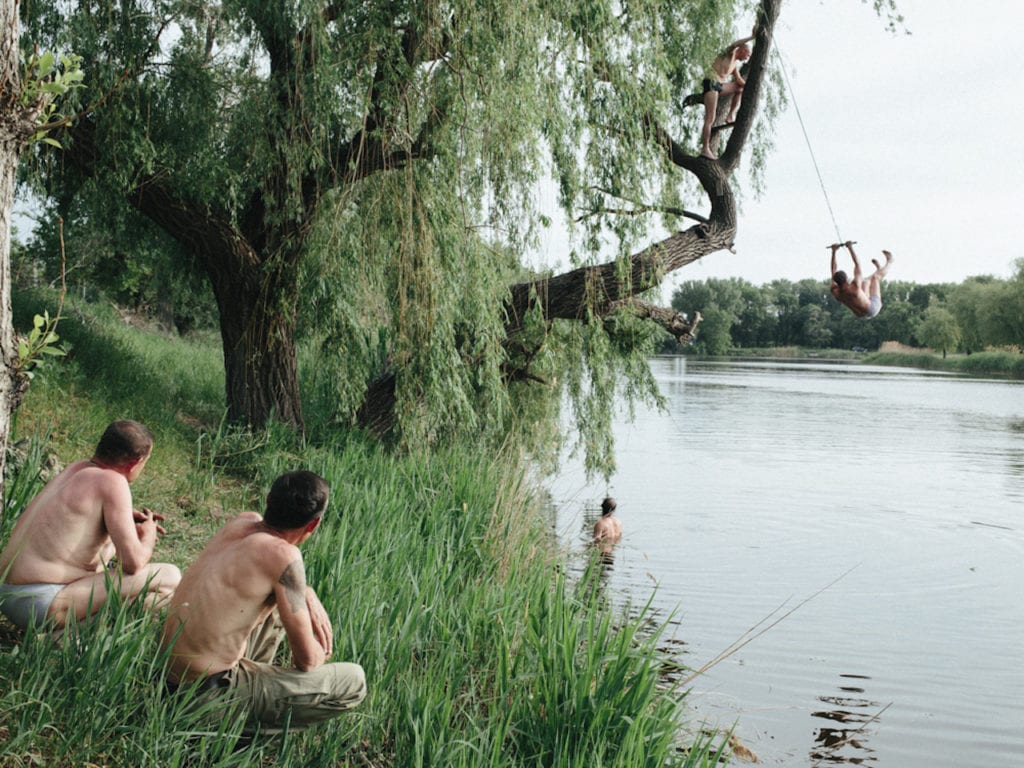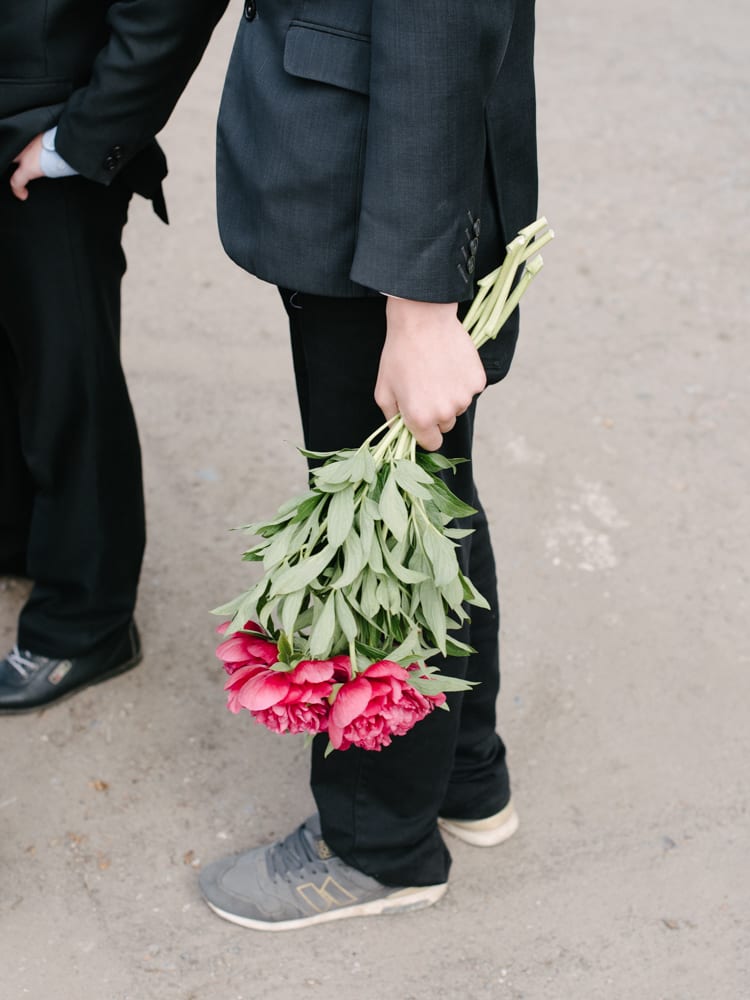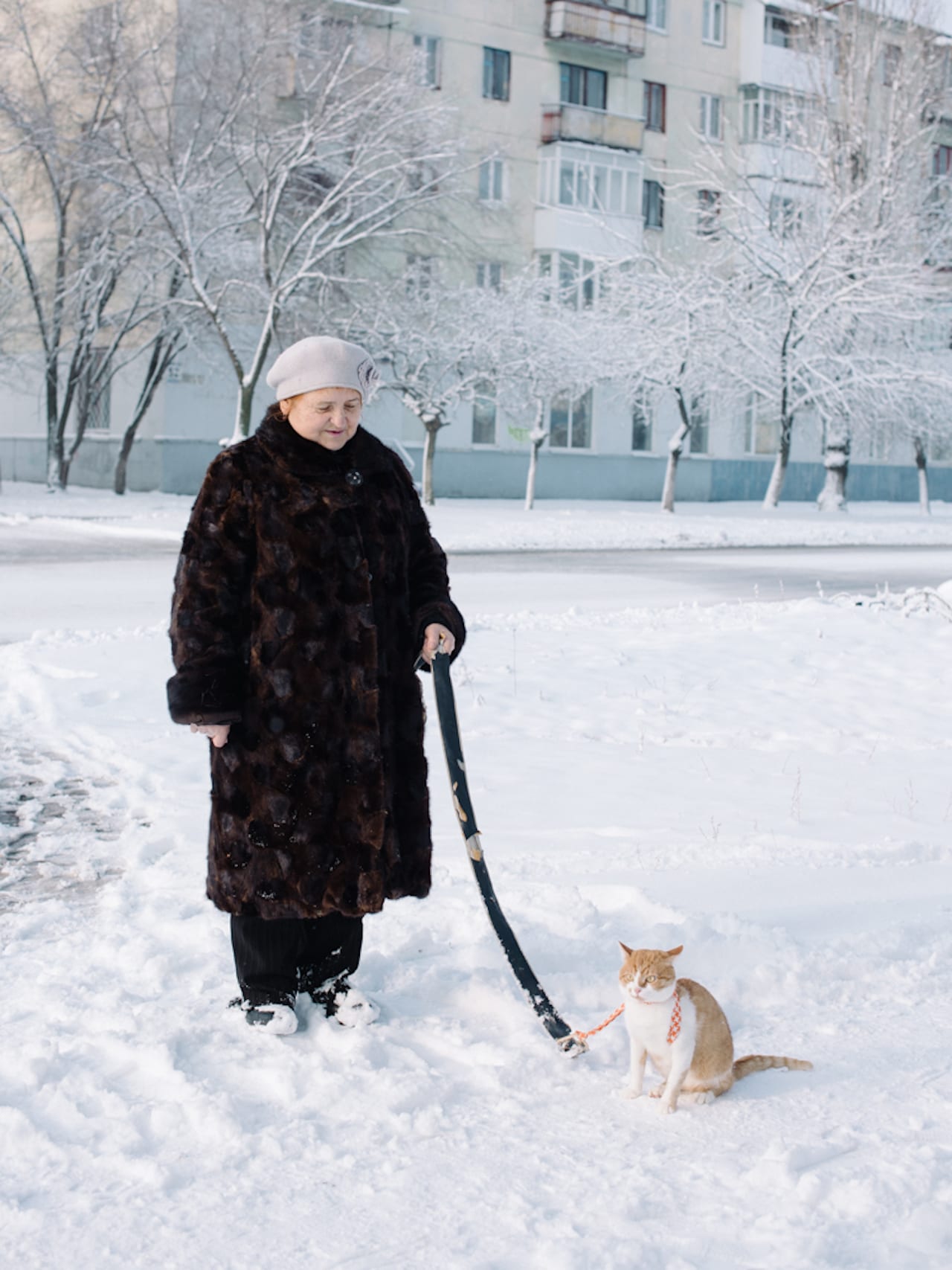Christopher Nunn offers a rare glimpse of everyday life in the Donbas region of eastern Ukraine
In early 2014, Donbas, a large mining and industrial region in southeastern Ukraine, was swept into conflict when the anti-government Euromaidan protests began in the capital Kiev. Christopher Nunn, whose grandmother is Ukrainian, was in the country at the time, and witnessing the early effects still the ongoing war, he proceeded to return over the course of the next five years.
Borderlands: Stories of Donbas is Nunn’s first major solo show, currently on display at Impressions Gallery in Bradford, West Yorkshire — the photographer’s home county. Drawn to the smaller mining settlements of a region on the edge of conflict, Nunn’s photographs capture the quieter moments that are often overlooked in mainstream media coverage. Following the stories of those who have lived through the region’s various stages of conflict and peace, Nunn provides a rare glimpse into everyday life, exploring themes of family, masculinity, identity, freedom and history.
“I wanted to understand Donbas in general, it’s history, the mentality of different generations, it’s past, and where it is heading,” says Nunn. In this Q&A, the photographer discusses his process and approach to documenting the region during a time of flux.
—

What took you to Ukraine initially, and what has made you stay for so long?
I first went to Ukraine around 2007, and these photographs were made over a period of around six years. My late grandmother was born in Kalush, western Ukraine, and was displaced as a teenager during the Second World War. In general I love being in Ukraine and wanted to spend as much time there as possible. The complicated political situation and conflict, which started quite suddenly, was important and something I wanted to address in my work.
Your representation the conflict is different from mainstream photojournalism. Why do you think it is important to tell individual stories, and what have you found that they illustrate about wider conflicts?
I have no background in photojournalism, and didn’t arrive at Ukraine as a photojournalist, so my approach is different because of that. Working in a conflict zone wasn’t something I’d envisaged or planned for. It was a very murky environment to find myself in, especially at the beginning of the conflict. I didn’t have answers, and it was a difficult situation to understand, let alone communicate via photography.
I quickly started to question the traditions of documentary photography, the honesty of it, it’s flaws and limitations, who it serves, especially seeing how Ukraine was constantly being misrepresented. This led to a lot of self doubt and questioning of my own work and what I was doing, and I went through long periods where I wasn’t photographing much. I was just there, observing, listening. It was very real, people were dying, the region was fractured.
Donbas felt like parallel worlds existing together; war and peace in close proximity; it’s history, and present political divide; families and friends on opposing sides of a conflict, which seemed to make little sense to anybody.
A lot of it was beneath the surface and difficult to see, hidden in plain sight, beyond the obvious war iconography. I focussed on stories outside of news cycles, the experiences of individuals I’d met over a long period of time as the region went through various stages of conflict and peace — people adapted to it in different ways. I tried to communicate these experiences in a way that was honest but which acknowledges the inherent flaws of trying to document other people’s lives. Maybe these pictures can offer a perspective, but of course it’s subjective.
Whilst trying to grasp the current situation and how it constantly changed, I wanted to understand Donbas in general, it’s history, the mentality of different generations, it’s past, and where it is heading.

Could you describe a bit about the process behind making this work — how did you travel, what kind of stories and people were you drawn to photographing, and how did you find them?
At first I was traveling to places by myself, walking around and working in a very serendipitous way, which has always been a big part of how I work. Sometimes I would meet people by chance, start a conversation, things like that, and that led to interesting stories. A lot of the time people would approach me because I was a foreigner. Being in small towns in rural Ukraine, many, if not most, people had never met an English person before, so they were interested to speak with me. This was very revealing and it allowed me to gain some sense of the general feeling of that time.
Later, I became a bit more structured. People close to me helped me gain access to certain things, such as military, for example. Most of these meetings were through close contacts, friends of friends etc. I also contacted people through social media, usually those who I had contact or mutual following with. Often I stayed with people for a few days. I’d take photos, record interviews, film videos or sometimes just observe the situation if taking photos was not appropriate. I collected things, objects, ephemera, found photographs, newspapers, anything that felt relevant.
There were many meetings like this and they often took a long time to arrange. This was always a huge privilege. The photos that exist are just a small part of those experiences. I visited schools, hospitals, mines, factories, trenches, military bases, celebrations and public holidays. In between all this I spent a lot of time simply being there with very little happening.

Do you see this as a finished project, and will you continue to work in Ukraine?
I don’t really work in projects as such. It’s more a body of work over a certain period of time. I have a lot of work from Ukraine that has never been seen, which I would like to publish or exhibit in some way.
A lot has changed since many of these photographs were made, they are from a different era, and anything I do in the future will be very different. Last year I made a film in Kyiv with director Oksana Karpovych, which is currently showing at various film festivals. I hope to develop more film projects because I feel certain stories are more suited to this medium. I never stopped working in Ukraine, and would love to carry on.
Borderland: Stories from Donbas by Christopher Nunn is on show at Impressions Gallery in Bradford, England, until 04 January. The accompanying newspaper is published in partnership with the gallery and Essarter Editions.

